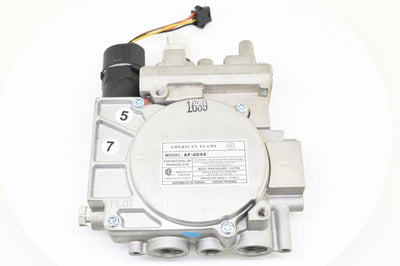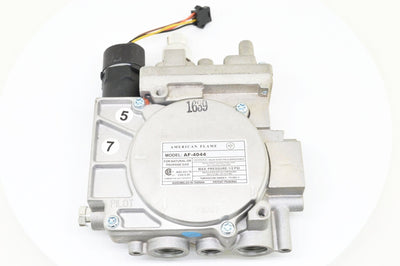We just purchased a fireplace and there is a smell coming from the unit (not a gas smell) but an odor
We just purchased a fireplace and there is a smell coming from the unit (not a gas smell) but an odor?
Are you dealing with an unpleasant odor from your newly purchased fireplace? This is a common concern many homeowners face after installing a new unit. Our comprehensive guide will help demystify this issue, providing valuable insights on the possible causes of these odors, how to address them and ensure your fireplace is safe for use.
Let's dive into the world of fireplaces - no nose plugs required!
Key Takeaways
- New fireplaces often have odors from seasonal burn - offs or leftover substances from manufacturing.
- Different smells can signify different problems, like dust accumulation, poor ventilation, or gas leaks.
- Regular cleaning and maintenance help keep your fireplace safe and fresh - smelling.
- Professional help is crucial if the smell persists after several uses of the fireplace or if you experience symptoms like headaches when using it.
Understanding Your New Fireplace: What Causes the Odor?
New fireplace odors can stem from several sources such as seasonal burn-offs, gas system installations, and various non-gas related elements that produce distinctive smells.
Seasonal Burn-Off
Fireplaces can emit an unpleasant smell during the initial uses in colder seasons, a phenomenon known as seasonal burn-off. This is particularly common with gas fireplaces and occurs due to the burning of dust accumulation from months of non-use.
The odor should disappear after a couple of fires when the accumulated debris has been burned off completely. However, if it persists past this point, homeowners may need to investigate further for other potential causes such as improperly installed systems or chimney issues.
Newly Installed Gas Systems
Newly installed gas systems can produce a distinct chemical odor as they settle into use. This smell often fills the room when you first ignite your new fireplace, attracting attention particularly in areas with poor air circulation.
The cause is typically remnants of manufacturing processes, including packing grease or paint burning off under high temperature conditions. As part of initial operation, this smell should dissipate over time after several uses and once all remaining factory substances have burnt off completely.
To ensure safety and proper functioning of your hearth appliances, it's recommended to inspect these new gas log arrangements regularly for any signs of improper fuel accumulation or exhaust issues that could lead to indoor air quality problems such as carbon monoxide build-up.
Non-Gas Odors
Different odors can stem from your fireplace that aren't associated with gas. These might include smells due to dust accumulation, burning off of old soot, or even the result of manufacturing processes like paint and packing grease burning off.
Despite often being harmless, these non-gas odors still create an unpleasant environment in the home and can be especially noticeable in lower level rooms where air circulation is limited.
Ensuring you keep your chimney clean and conduct regular inspections could help alleviate some of these issues; however, understanding what each smell signifies plays a key role as well.
For instance, if there's a recurring burnt fuel smell despite not having used your fireplace recently, it might indicate an issue with ventilation or draft that requires professional attention.
Distinguishing Different Types of Fireplace Odors
In this section, we delve into different types of odors that can emanate from your fireplace such as the smell of burning plastic, rotten or foul scents, and musty or damp aromas; understanding these helps in identifying the potential issues and their related solutions.
Burning Plastic Smell
A burning plastic smell emanating from your fireplace could signal various issues. One plausible explanation is the presence of dust accumulation, including household particles like skin cells and pet dander, settling on internal components of your gas fireplace.
The heat ignites these particles, resulting in a distinctive odor similar to burning plastic. In some cases, debris left behind after manufacturing processes can also be a potential cause.
This scent may become particularly pervasive in rooms with low ceilings and poor air circulation. It's important to get your fireplace checked by professional chimney sweeps who are equipped to handle such situations efficiently while ensuring fireplace safety at all times.
Foul or Rotten Smell
A foul or rotten smell coming from your fireplace could indicate a serious problem. It's often due to an uncontrolled buildup of creosote in the chimney or flue. Creosote is a byproduct of wood-burning, and if not properly cleaned, it can produce this unpleasant odor.
Not only is the smell off-putting, but excessive creosote can also lead to dangerous situations like chimney fires.
In some cases, this nasty smell might be caused by animal remains that have ended up in your chimney structure. Dead rodents, birds, or even small mammals finding their way into chimneys aren't uncommon occurrences.
Their decomposition process releases a foul odor that wafts through your home each time you use the fireplace. Chimney maintenance and regular inspections become crucial in such scenarios as they help prevent these issues and keep your fireplace smelling fresh.
Musty or Damp Smell
A musty or damp smell wafting from your fireplace can often be traced back to poor ventilation or the presence of moisture. Moisture build-up in your chimney may occur if it's not capped properly, allowing rain and snow to seep inside.
This damp condition is conducive for molds and mildew that produce a distinctive musty odor when they grow. Just as water finds its way into uncapped chimneys, it can also penetrate cracked masonry structures, contributing to the dank smell.
Furthermore, old houses might have lingering odors trapped within their walls for ages; add some heat from an active fireplace, even converted ones like those found in 75-year-old homes, you get an amplified musty aroma which permeates indoor spaces with weaker air circulation such as lower-level rooms.
Thus maintaining a well-capped and structurally sound chimney alongside improving the overall house ventilation significantly mitigates these damp smells.
When is it an Emergency? Identifying Dangerous Odors
Knowing when a fireplace odor signals danger is critical for your safety - let's delve into how to recognize signs of gas leaks, electrical burning smells, and the potentially hazardous growth of mold or mildew.
Read on to ensure you're equipped with the right knowledge to protect yourself and your family.
Gas Leaks
Gas leaks pose a significant threat within the home due to their potential to cause fire or explosion. Often, you can detect these because they emit a distinctive odor that resembles rotten eggs or sulfur.
However, not every gas leak produces this scent, making some of them dangerously stealthy. Therefore, it is recommended to have CO detectors installed in your home and routinely checked for functionality.
After all, prevention is key when dealing with life-threatening events such as gas leaks from the fireplace's plumbing assembly. If you ever experience dizziness, headaches, nausea or disorientation while using your fireplace, immediately stop using it and seek professional help.
Electrical Burning Smell
An electrical burning smell from your fireplace could indicate a serious issue. It often means there's something wrong with the wiring or components within the unit itself. This distinctive odor resembles the scent of burnt plastic or rubber, signaling an overheating electrical system that poses potential fire hazards.
Electrical issues should never be ignored due to their high risk. If you notice this smell persisting, it’s crucial to turn off your fireplace immediately and call professionals for inspection and repair.
Failures in electrical connections not only induce unpleasant smells but also lead to dangerous situations such as sparks igniting nearby flammable materials. Be sure to schedule regular maintenance checks on your fireplace's wiring systems and components, ensuring they are in good working condition.
Mold or Mildew
Mold or mildew presents a unique concern in your fireplace, manifesting as a musty and damp smell. An unchecked growth of these fungi can seep into other parts of your house, causing this distinctive odor to become more noticeable.
Often thriving in areas with poor air circulation, mold or mildew may signify that your fireplace and chimney systems need immediate attention. Unmaintained chimneys are perfect breeding grounds for such organisms; neglecting chimney cleaning for over two years can lead to the buildup of soot and increase chances for mold growth.
The distinct chemical smell produced by potentially harmful molds could often be mistaken for typical household dust, skin cells or pet dander. Thus, ensuring proper ventilation and regular maintenance is crucial to prevent the spread of these fungi and keep your indoor quality optimal while enjoying the warmth from your hearth appliances.
How to Address and Eliminate Fireplace Odors
This section will provide a step-by-step guide on how to properly clean your fireplace, focusing on removing soot from a gas log set. We'll also delve into the importance of ventilation and air circulation in keeping your fireplace odor-free.
Proper Cleaning and Maintenance
Proper cleaning and maintenance are essential for ensuring a fresh-smelling, well-operating fireplace. Follow these steps to maintain your fireplace's quality:
- Start with a thorough cleaning of the entire unit, focusing especially on the gas log arrangements and fake 'ash' material in the fireplace.
- Remove soot buildup regularly to prevent it from burning off and causing an odor.
- Schedule regular inspections with professional chimney sweeps for comprehensive cleaning.
- Ensure the chimneys have been cleaned since moving into the home, as old soot can cause unpleasant smells when burned.
- Clear out any accumulated debris from household dust, pet dander, hair, and skin cells.
- Avoid having low ceiling rooms as they may contain lingering smells of old fires, leading to a musty odor in your fireplace.
- Check the packing grease or paint applied during manufacturing processes; if not properly removed before usage, it may burn off and cause an annoying smell.
How to Clean Soot from a Gas Log Set
Cleaning soot from your gas log set enhances the overall atmosphere and prevents unpleasant odors. Here's a comprehensive guide to get you started:
- Switch off the fireplace: Safety always comes first, so ensure that you turn off the gas supply before starting the cleaning process.
- Wait for it to cool down: Patience is key; allow your gas log arrangement enough time to cool down completely before you commence cleaning.
- Remove logs: Carefully remove each log from your fireplace; they can be fragile hence need gentle handling.
- Vacuum Soot: Use a soft brush vacuum attachment to safely clear away any loose soot buildup on each log without causing damage.
- Use a special cleaner: Purchase a cleaner specifically designed to tackle stubborn soot stains on gas logs, and apply according to manufacturer’s instructions.
- Clean the fake ash material: This component of your fireplace could potentially be contributing to unwanted odors, consider giving this a thorough clean as well often neglected in regular maintenance.
- Reassemble the logs: Once dried fully, put all logs back into their original positions in your fireplace.
Ventilation and Air Circulation
Good air circulation in your home plays a crucial role in maintaining a fresh-smelling fireplace. It prevents the accumulation of odors and ensures that any smell produced by the fireplace is promptly diffused.
Odors are often more noticeable in lower levels of a house due to limited ventilation, as seen from homes where smells became potent after longer periods downstairs compared to upstairs.
Prioritize opening windows regularly for proper airflow or consider investing in an air purifier. Ensuring strategic placement of vents can also help circulate clean air effectively throughout your space and keep unpleasant fireplace odors at bay.
Prevention: Ways to Keep Your Fireplace Smelling Fresh
Ensure fireplace odor prevention through regular inspections, using odor-absorbing materials and keeping the chimney clean and clear. Regular inspections can help identify potential issues before they become problematic.
Incorporating odor absorbing materials like baking soda or commercial products can neutralize unpleasant smells. Having a clean and clear chimney contributes massively to maintaining a fresh-smelling fireplace by allowing proper ventilation and minimizing ash accumulation.
Always prioritize these preventive measures for a fresher, more enjoyable fireplace experience at home.
Regular Inspections
Regular inspections are crucial for maintaining the health of your fireplace and preventing unpleasant odors.
- Scheduling regular chimney sweeps will eliminate accumulated soot and creosote, reducing potential odor sources.
- As the fireplaces in your house are about 75 years old, careful maintenance is required to prevent problems that might lead to foul odors.
- Regular examinations of the venting systems can help detect any significant gas or propane accumulation before it becomes a threat to your safety and comfort.
- A licensed professional should perform an annual inspection of hearth appliances in older homes especially because they may be more prone to malfunctions due to age.
- These inspections often include checking for possible gas leaks from the plumbing assembly which could not only cause unpleasant smells but also pose severe health risks.
- Since the chimneys haven't been cleaned in 2 1/2 years, a comprehensive inspection by a trained professional can help identify any issues leading to bad odors.
- In addition to cleaning and repairs, these inspections should cover other potential odor - causing issues such as dampness or mold growth in the chimney.
- If there's an Indian restaurant smell or burnt fuel smell coming from your fireplace, having regular inspections would detect if there is an exhaust spillage back into your home causing these smells.
- Inspections may also uncover debris from manufacturing processes that might have been left behind during installation of new gas systems, another possible source of unusual scents.
- Establishing a routine for fireplace maintenance will ensure indoor air quality stays healthy all year round while keeping away unwelcome smells.
Using Odor Absorbing Materials
Utilizing odor absorbing materials can play a critical role in controlling the smell from your fireplace. Here are some beneficial steps you should consider:
- Keep some activated charcoal or baking soda near your fireplace. Both elements are renowned for their ability to absorb bad odors.
- Invest in an air purifier. It helps by filtering the air and reducing unpleasant smells.
- Use unscented candles around your fireplace. These candles can absorb the scent without releasing any of their own.
- Utilize essential oils with diffusers to neutralize the harsh odors.
- Consider using commercial products designed explicitly for fireplace odor control.
- Regularly replace filters if you have a forced - air heating system, as old filters often trap odors that get circulated back into the room.
Keeping the Chimney Clean and Clear
Ensuring that the chimney is clean and clear will greatly aid in reducing fireplace odors. Here are some key steps to follow:
- Schedule a regular chimney inspection. It's important that homeowners, like those who moved into their house 2 1/2 years ago and never cleaned their chimneys, make this a habit.
- Opt for professional cleaning services. This task requires expertise to effectively eliminate soot, dust, pet dander, and other debris from the gas log arrangements and fake ash material.
- Address blockages as soon as they are discovered. These can trap unpleasant smells inside your home.
- Perform routine maintenance tasks like sweeping and removing residual ashes after using your fireplace.
- Consider installing a chimney cap to prevent debris, rainwater or even small animals from entering the chimney which could cause bad smell.
- Inspect the flue regularly to ensure it opens and closes properly; an improperly functioning flue could lead to poor air circulation and accumulation of unwanted odors.
- Lastly, always hire a qualified technician such as a certified chimney sweep when tuckpointing or repairs are needed in order to maintain good indoor air quality.
Conclusion
Understanding and addressing odors from your fireplace is crucial for safety and enjoyment. With the right knowledge, you can easily identify different smells, determine if they pose any risks, take appropriate action to eliminate them or prevent future ones.
Enjoy your cozy moments by the fire with peace of mind knowing you've taken steps to enhance indoor air quality around your much-loved hearth.
FAQs
1. What could cause a new smell from my gas fireplace?
The novelty scent from your Gas Log Fireplace might be due to manufacturing process debris burning off. This new product smell should disappear with usage.
2. Is it safe if an odor comes from the recently installed fireplace?
Safety is crucial, ensure a properly designed and installed fireplace and chimney for secure venting. If you persistently get headaches or other symptoms, check your carbon monoxide detector.
3. Can improper installation lead to bad smells in the house?
Yes! An improperly installed direct vent (DV) type gas insert can cause exhaust spilling back into home causing odors similar to an Indian restaurant analogy or old fires' smell.
4. How can we identify possible problems with our newly purchased unit?
Regular Chimney & Venting systems examinations are essential after Fireplace Installations to avoid common problems like downdraft or incomplete combustion which could result in unwanted fumes.
5. Should I worry about fireplace stinks?
Occasional issues with 'fireplace stinks' may occur due to byproducts of combustion or residual creosote but persistent unpleasant odors need immediate attention as they may indicate serious safety concerns such as a gas leak from plumbing assembly.
6. What do we do if there's chronic low-level CO exposure detected by O2 sensors in case of ventless appliances?
If your digital combustion analyzer detects any unsafe levels, seek professional assistance immediately for heating help and for necessary services like chimney repairs, preservation, flue overhaul or even complete fireplace remodeling considering safety standards.
← Older Post Newer Post →




























